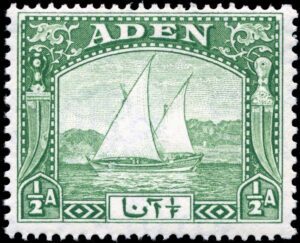Aden (1937-65) Country Guide
Nestled at the southern tip of the Arabian Peninsula, Aden emerges as a city steeped in history, resilience, and strategic significance. With its roots reaching into antiquity, Aden has evolved into a pivotal port city, bearing witness to the rise and fall of empires, the vibrant exchange of cultures, and the ebb and flow of trade winds across the Indian Ocean. From ancient times to the contemporary era, Aden’s allure lies not only in its strategic maritime location but also in its ability to adapt and thrive amidst the dynamic forces of change. As we delve into the heart of Aden’s narrative, we uncover a city that has not only shaped the history of the Arabian Peninsula but has also been shaped by the currents of time, making it a fascinating focal point in the mosaic of global heritage.
-
Ancient Times (Pre-1st Century):
- Aden’s strategic location attracts early civilizations, establishing it as a key trading hub in the Arabian Peninsula.
- Maritime trade routes flourish, connecting Aden to regions across the Indian Ocean and the Mediterranean.
-
Islamic Period (7th – 15th Century):
- Aden becomes an integral part of the Islamic Caliphate, witnessing periods of prosperity and cultural exchange.
- The city’s prominence as a maritime center grows, influencing the development of its postal communication.
-
Portuguese and Ottoman Eras (16th – 19th Century):
- Portuguese explorers and Ottoman forces vie for control over Aden, leaving a lasting impact on its geopolitical landscape.
- The Ottoman Empire establishes a formal postal system in Aden, aligning it with broader reforms in communication.
-
1837
Under the provisions of the Indian Post Office Act of 1837 (Section XX), private vessels were mandated to transport letters at specified postage rates. In Aden, a handstamp was utilized for pre-adhesive ship letters. Despite their usage persisting until 1867, instances of these handstamps are seldom observed.
-
British Occupation (1839 – 1967):
- British forces secure Aden as a critical naval base, ushering in an era of colonial influence.
- The establishment of an organized postal service aligns with British administrative structures, facilitating communication within and beyond Aden.
-
The Aden Settlement utilized adhesive postage stamps of British India from October 1, 1854, until Aden attained the status of a crown colony on April 1, 1937. Functioning as an outpost of the British East Indian empire, Aden received India’s inaugural lithographed adhesives, coinciding with their release on the Indian mainland. Up until 1857, Aden’s sole post office was located in the Crater, later recognized as Aden Cantonment or Aden Camp. Mail transportation involved camel journeys to and from Steamer Point. In 1857, the appointment of a Postmaster led to the relocation of the main post office to new quarters at Steamer Point. Covers originating from Aden featuring Indian lithographed stamps are considered rare.
While these stamps lacked an Aden overprint, identification is facilitated by the frequent use of the number 124 in postmarks, assigned to Aden as part of the Indian post office identification system. Additionally, other numbers and letters such as 132, 125, A/125, B, and B-22 were employed to distinguish various offices in Aden.
.
-

1937 Dhow Issue
In the year 1937, the Settlement underwent detachment from India and transformed into the Colony of Aden, assuming the status of a British Crown colony. This newly established colony introduced a set of twelve definitive stamps featuring a dhow, crafted by De La Rue & Co.
-

1939 King George VI Issues
In 1939, a fresh definitive release featuring the likeness of King George VI was issued. However, objections arose from the sultans governing the two principal states in the Hadhramaut, which formed part of the Aden Protectorate. These sultans, asserting their sovereignty, contested being considered subjects of the King of the United Kingdom.
-

1942 – Sultan Issues
the British government responded by issuing distinct stamps in 1942. These new stamps bore additional inscriptions, namely “Kathiri State of Seiyun” and “Qu’aiti State of Shihr and Mukalla” (later Qu’aiti State in Hadhramaut), featuring portraits of the respective sultans in lieu of the effigy of George VI. Notably, all these variations remained valid both in Aden and across the Aden Protectorate.
-

1951 – 1939 Definitives Re-Issue
In 1951, the 1939 definitive stamp series underwent overprinting with shilling denominations, marking the transition from the Indian rupee to the British East African shilling as the official currency in Aden.
Stamps bearing the inscription “Aden” remained in use until March 31, 1965, after which all such stamps were retired.
Subsequently, stamps representing the Federation of South Arabia, a union comprising Aden Colony and the Aden Protectorate, were issued between 1963 and 1966.
-
Post-Independence (1967 Onward):
- Aden gains independence from British rule and becomes part of the People’s Democratic Republic of Yemen.
- Modernization efforts extend to postal services, adapting to new technologies and communication methods.
-
Contemporary Period (21st Century):
- Aden navigates the challenges of political transitions and regional dynamics in the modern era.
- The city’s postal history reflects the global shift towards digital communication, marking a new chapter in Aden’s connection to the wider world.






